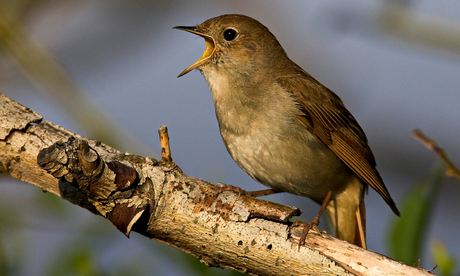Secretive bird produces more notes than other species, according to study that sheds light on human language
theguardian.com, Sunday 4 May 2014 15.26 BST
No wonder they celebrated it in a song. The common nightingale is top of the feathered crooners, according to research highlighted on International Dawn Chorus Day that suggests the bird's impressive vocal range is down to the composition of its brain.
 The secretive bird, immortalised in the romantic 30s song A Nightingale Sang in Berkeley Square, produces far more notes in its birdsong than other species, according to research carried out at the University of Bath and Cornell University.
The secretive bird, immortalised in the romantic 30s song A Nightingale Sang in Berkeley Square, produces far more notes in its birdsong than other species, according to research carried out at the University of Bath and Cornell University.
The researchers studied three males from 49 different common species of songbirds from the US, Europe and South Africa, and compared the size and shape of their brains with the length and complexity of their songs. It was found that birds with larger "higher" brain areas in relation to "lower" brain areas were able to learn dozens of different notes. Higher brain areas control more cognitive and learning functions, while lower brain areas control more motor functions.
No comments:
Post a Comment